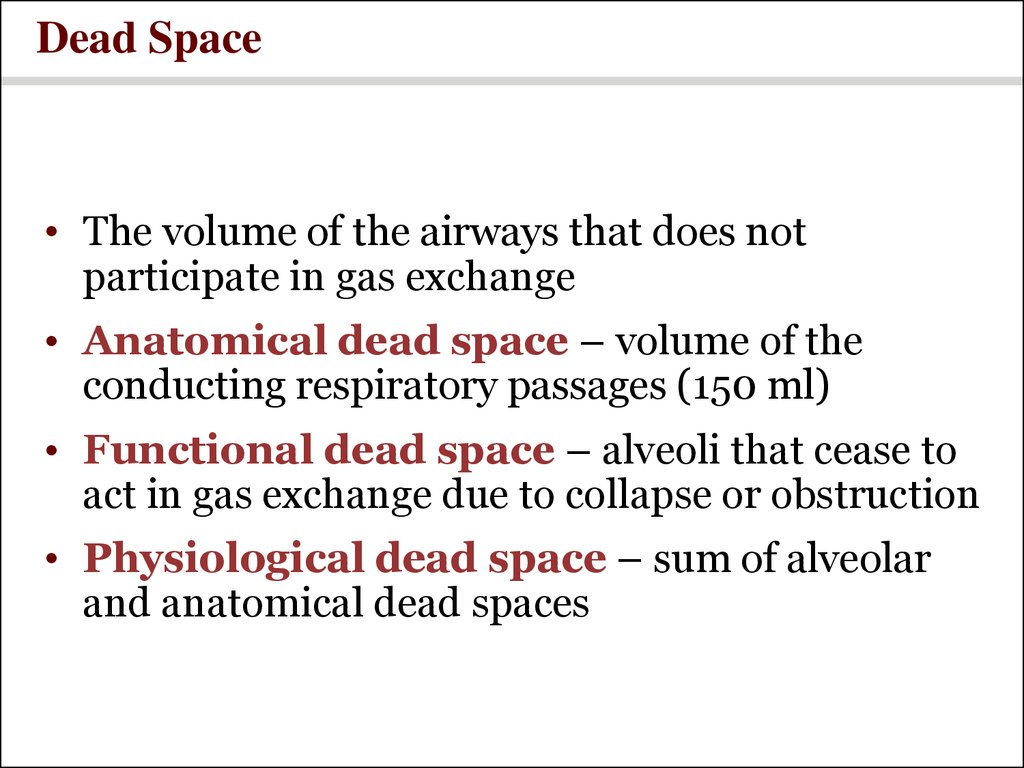

Physiological dead space is the total dead space in the lungs.What is it called and what does it consist of? What kind of dead space results from ventilation of alveoli that are either under perfused or not perfused at all?įinally, we come to the third kind of dead space. Whenever the ventilation perfusion ratio is greater than one up to infinity, we have wasted ventilation. In lung regions with no blood flow, the VQ ratio equals infinity.What about a lung area where there is no blood flow? What will the VQ ratio for that area equal? The VQ ratio is greater than 1 in lung regions that are over ventilated or under perfused.When an area of the lungs is either over ventilated or under perfused, what will its ventilation perfusion ratio be? Alveolar ventilation and dead space ventilation are both increased proportionally.In contrast, how does increasing the number of breaths per minute affect ventilation of alveoli and dead space? When tidal volume is increased, most of the extra air ventilates the alveoli.When tidal volume is increased, does most of the extra inspired air ventilate the alveoli, the dead space, or about equal? The anatomical dead space is the volume of air that remains in the airways.

Which of the three kinds of dead space is the volume of air that remains in the airways? Under resting conditions, what percent of each tidal volume of inspired air remains in the air ways? Some of it remains in the air ways that comprise the conducting zone of the respiratory system. Not all inspired air is delivered to the alveoli. I’ll cue you with the first letter of each. Before we discuss the three kinds of dead space that exist in the lungs, let’s just list them.


 0 kommentar(er)
0 kommentar(er)
